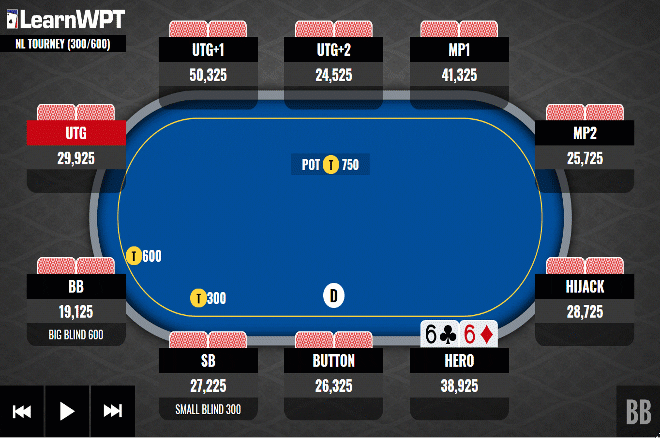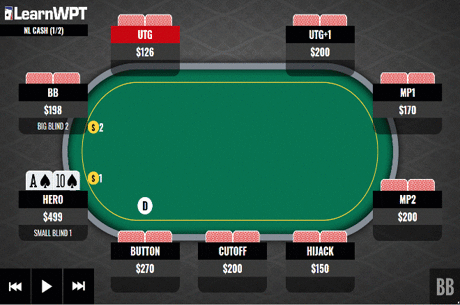Pocket Sixes Versus a Continuation Bet: Call, Fold, or Raise?

DECISION POINT: In a no-limit hold'em tournament, the player sitting UTG+1 — someone you know to be a straightforward player — raises. The hijack calls and you call as well from the cutoff with 6♣6♦. The three of you see a flop come 9♠8♣9♦, and UTG+1 makes a continuation bet. The player in the hijack seat folds, and the action is on you...
What do you do here:
PRO ANSWER: Bluff-raising will be the most profitable play against many opponents in this situation. Raising exploits the nut advantage that our range has against the early position opener.
When Villain raises from EP, he has very few 9xXx or 8xXx hands in his range. This means that his postflop range is largely capped on this specific flop. Our range is not, since we have many 9xXx hands as an in-position caller.
That fact allows us to create more fold equity than usual on the flop when we exert aggression against our opponent's c-bet. This raise will be extremely profitable against an opponent willing to fold an overpair to a single raise on the flop.
Ideally, we would have a hand with some more backdoor equity when called (such as Q♣J♣) for this type of play in general. But this is a good spot given our specific read on Villain as a straightforward player and the fact that it was three-way to the flop instead of heads-up.
The fact that it was multi-way makes it that much easier for one of the callers to have a nine from the c-bettor's perspective. It also makes it much more likely that he will fold a hand with significant equity.
Raising is the best play.
LearnWPT is a poker training site dedicated to transforming the poker games of rank beginners, skilled amateurs, and aspiring professionals. Offering both Live Workshops and Online Training, is a one-stop shop for poker education, designed to provide all the tools a player needs to become a winner. Visit LearnWPT.com today and get 2 Free Strategy Episodes that will immediately impact how you play. LearnWPT.com - Think Like a Pro!









